System Buyers' Guide: PCs for Under $1000
by Sean Hollister on February 12, 2010 2:00 AM EST- Posted in
- Guides
AMD Entry-Level PC
Even as Intel produces the fastest desktop processors in the world, it is competitor AMD that has become synonymous with value. Under the $125 price point that Intel has set with the Core i3-530, AMD reigns supreme in both performance and raw core count for every dollar spent. Because of that, for the first time in an AnandTech Buyer's Guide, you'll find us recommending a triple-core processor for an entry-level machine.
| AMD Entry-Level System | ||
| Hardware | Component | Price |
| Processor | AMD Athlon II X3 435 Rana (Tri-core 2.9GHz, 45nm, 3x512KB L2 Cache, Socket AM3) |
$75 |
| Cooling | CPU Retail HSF | $0 |
| Video | Onboard | $0 |
| Motherboard | ASRock M3A785GMH/128M AM3 Micro ATX | $77 |
| Memory | G.Skill Ripjaws 4GB DDR3-1600 F3-12800CL9D-4GBRL | $105 |
| Hard Drive | WD Caviar Blue 500GB WD5000AAKS | $54 |
| Optical Drive | Sony Optiarc Model AD-7240S-OB 24X DVDRW SATA | $28 |
| Audio | Onboard | $0 |
| Case | Cooler Master Centurion 5 CAC-T05-UW Mid Tower ATX | $55 |
| Power Supply | OCZ ModXStream Pro 500W ATX12V SLI Certified, CrossFire Ready, 80 PLUS Certified Modular Active PFC (before $25 Rebate) | $65 |
| Base System Total | $459 | |
| Display | ASUS VW193TR Black 19" 5ms Widescreen LCD (1440 x 900) | $120 |
| Speakers | Built-in Monitor | $0 |
| Input | Microsoft B2L-00045 Comfort Curve Black USB Keyboard and Optical USB Mouse - OEM | $22 |
| Operating System | Microsoft Windows 7 Home Premium OEM 1-Pack (for System Builders) | $105 |
| Complete System Total | $706 | |
| Plus Estimated Shipping (within Continental U.S.) | $717 | |
| Rebates | -$25 | |
| Bottom Line (less tax, if applicable) | $692 | |
And what a processor it is: the 2.9GHz Athlon II X3 435 Rana. Here's the 435 Rana slaughtering last year's value CPU choice, the Athlon X2 7750 BE:
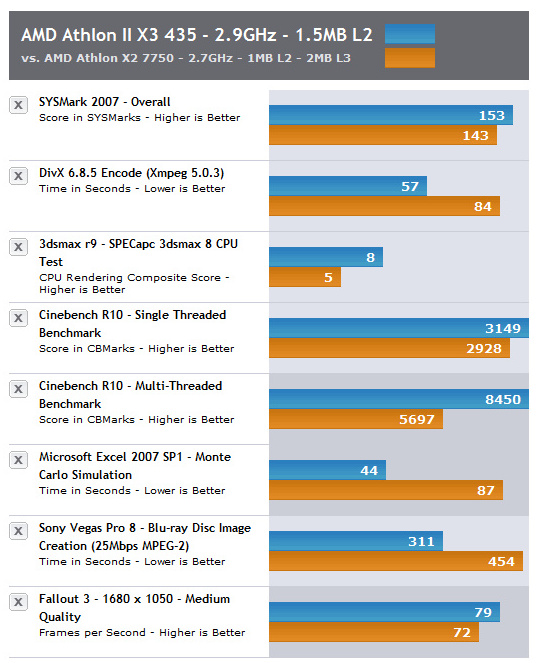
And here's the 435 Rana coming out ahead in every single benchmark against our choice for the Intel entry-level PC, the Pentium Dual-Core E5300:
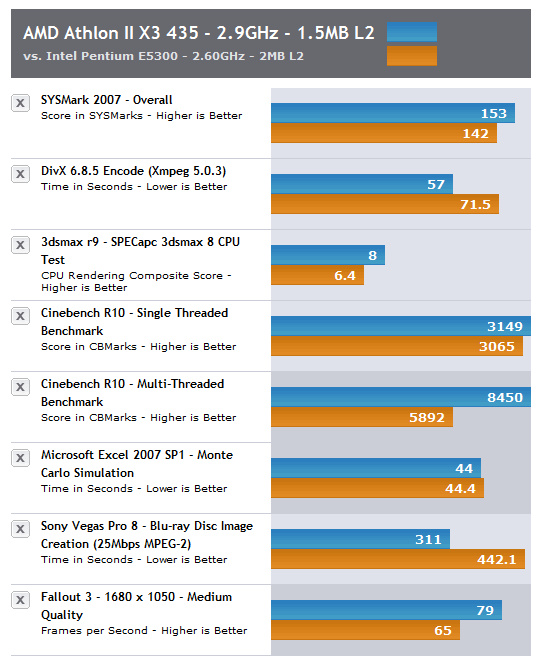
Positioned precisely at the sweet spot in AMD's lineup between the dual-core Athlon II X2s and the quad-core Athlon II X4s, the $75 Athlon II X3 435 Rana has the core count and clock speed to be the best of both worlds. It performs so admirably in both single and multi-threaded applications, in fact, as to give even low-end Phenom II CPUs a run for their money in certain benchmarks. Factor in low enough heat and power consumption that many report overclocking to 3.6GHz on air, and you have a practically perfect processor for budget enthusiasts.
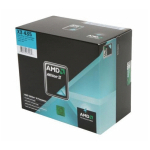 |
And because the 435 Rana is based on the Phenom II die, we just had to pair it with an ACC-capable motherboard. In case you're not familiar, AMD's tri-core chips actually aren't; they're quad-core CPUs binned as having a manufacturing defect in one core with that core consequently disabled. But if demand for a tri-core chip is high enough that AMD finds themselves having to disable perfectly good quad-core chips to sell them as tri-core instead… you just might be able to unlock that fourth core, and ACC (Advanced Clock Calibration) is your golden ticket.
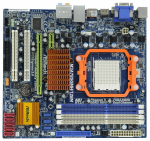 |
But ACC is hardly the best reason to buy the ASRock M3A785GMH/128M motherboard. The reason to buy the M3A785GMH is because for the bargain price of $77, it's one of the most full-featured Micro ATX motherboards we've seen for AMD chips. Based on the AMD 785G / SB710 chipset we favorably reviewed in August, the M3A785GMH is its most powerful interpretation—the one that comes with 128MB sideport of DDR3-1333 for enhanced video performance on its Radeon HD 4200 IGP and supports up to 16GB of DDR3-1600 system memory in four dual-channel banks. The SB710 Southbridge provides five SATA 3Gb/s ports supporting RAID 0, 1 and 10, while Realtek pulls double-duty providing 7.1-channel HD audio with their ALC888 chip and Gigabit Ethernet with their 8111DL NIC. VGA, DVI and HDMI video-out accompany an eSATA, combo PS/2, optical S/PDIF-out and four USB 2.0 ports on the rear panel, with headers for an additional six USB ports on the motherboard itself. Last but not least, a single PCIe x16, a PCIe x1 and two PCI slots appear in an excellent layout with three fan headers, an IDE slot and even a legacy floppy connector at the very bottom. If you don't feel you need the extra speed and future-proofing that comes with DDR3, you can easily shave off $12 by going with the practically identical $65 ASRock A785GMH/128M instead, which trades the Realtek ALC888 for VIA VT1708S 7.1-channel audio and an extra SATA 3GB/s port.
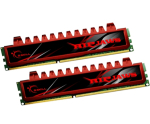 |
With both DDR2 and DDR3 memory prices the highest we've seen in recent memory, picking a set of fast, reliable yet inexpensive modules can be an exercise in futility. Be sure to shop around, because in all likelihood, there will be better and vastly different deals by the time you read this guide. But as of today, we believe the $105 G.Skill Ripjaws 4GB DDR3-1600 CAS 9 kit offers the best value for your money. It's true that regardless of brand and binning, the quality of memory modules varies widely, but G.Skill modules have an excellent reputation as of late, and these particular modules are designed to both run at low voltage (1.5v) and are reportedly excellent overclockers. As mentioned above, if you choose to go the DDR2 route you'll lose some overhead and future-proofing potential, but at a substantial savings of up to $30 if you choose low-cost DDR2 modules like the G.Skill DDR2-800 CAS5.
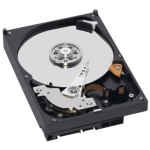 |
While the quality and reliability of magnetic hard drives increases year after year, we've found that actual hard drive capacity and performance is something of a commodity these days. Regardless of the manufacturer you pick today, an entry-level 500GB hard drive will cost you around $55 and offer the same performance as any of its brethren. The only exception to the rule is the WD Caviar Green, which tends to run slightly slower but quieter than its counterparts. Our current pick is the WD Caviar Blue, simply because of its widespread availability and Western Digital's stellar reputation.
Our choice for an optical drive remains the tried-and-true Sony Optiarc AD-7240S-0B, a SATA-connected 24X DVDRW with faster burning speeds and greater reliability than anything else in its price range. Though the price of Blu-ray readers has fallen considerably—the Lite-ON iHOS104-06 in particular retailing for only $60—Blu-ray is still a luxury for most budget boxes, its discussion better saved for our upgrade section on page 6.
 |
If we had to pick a single reason why low-end PCs get a bad rap, it would probably be the prevalence of cheap cases and even cheaper bundled power supplies. To combat these weaknesses, we chose the time-honored favorite Cooler Master Centurion 5 to house these budget PCs, and the OCZ ModXStream 500W PSU to power them. At $55, the Centurion 5 is a solid, stylish aluminum mid-tower with clean lines, few sharp edges, a pair of quality fans, a CPU air duct and a nearly tool-less design that makes installing drives and expansion cards quite easy. Meanwhile, the ModXStream 500W is a bona fide bargain at $40 after rebate, offering efficiency through both reduced power consumption (as certified by the 80 Plus efficiency rating) and a modular design that allows for reduced cabling and, by extension, greater airflow.
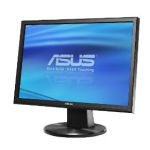 |
Though ASUS is known primarily as a manufacturer of motherboards, in recent years they've expanded their efforts greatly to include netbooks, sound cards and even low-cost monitors, each of which miraculously maintain the company's reputation for quality. We therefore have no reservations in recommending the $120 ASUS VW193TR, a 19" monitor with 1440x900 native resolution, DVI and VGA connectivity and a 5ms response time, all of which are more than acceptable for an entry-level screen at this price point. If you require a large desktop for productivity or intend to be viewing large amounts of HD multimedia content, however, you'll find bigger and better monitors in our upgrade section on page 6.










86 Comments
View All Comments
DominionSeraph - Saturday, February 13, 2010 - link
For only $6900 + a measly $400 tax (CT), you could have an 8 core 2.93GHz with a whopping 6GB RAM and a rebranded Geforce 8600 GT!Can i haz tek job nao?
chrnochime - Saturday, February 13, 2010 - link
I haven't been keeping up to date with the socket h burn issue. So, has Anand et al figured out, with or without help from the manu, determine the source of the socket burn problem?I can only speak for myself that unless this is determined conclusively, I'm stuck going with either socket 1366 or frantically scour up the last of the 775 motherboards.
stardude82 - Saturday, February 20, 2010 - link
There was never an really issue with the 1156 Boards. The problem was only with Foxconn sockets used for extreme overclocking above 4 Ghz. If you are really concerned there are lots of boards with the Lotts manufactured sockets.clarkn0va - Saturday, February 13, 2010 - link
Ignoring ACC and the possibility of unlocking one core of the Athlon II X3 435, it's not obvious why one would pay an extra 67% for the Phenom II X3 720, at least not from the information provided in the article.Looking in Bench, these two CPUs trade blows on all the benchmarks and there is no obvious winner. Add to that the possibility of turning the 435 into a quad, and the fact that it's $50 cheaper, according to this article, and I have no idea how SH can recommend the 720 at all, at least not without looking at information beyond what's presented here and in Bench. Please enlighten me if I'm missing the point though.
Great article, Sean. It's always interesting to see what other pros are recommending and why.
http://www.anandtech.com/bench/default.aspx?p=112&...">http://www.anandtech.com/bench/default.aspx?p=112&...
SeanHollister - Sunday, February 14, 2010 - link
You're right on the money, pun intended. In terms of performance per dollar at stock clocks, the Athlon is indeed a much better value for today's software, especially if you manage to unlock the fourth core.That said, there are three things that distinguish the Phenom. First, it's a better (and easier) overclocker. Second, it's the better gaming CPU in all benchmarks I've yet seen. Third and most importantly, it's got a sizable L3 cache—fast becoming an industry standard for CPUs—where the Athlon has none.
In today's software and benchmarks, the L3 cache doesn't offer much of an advantage, just as a dual-core processor wouldn't offer an advantage over a single core a number of years back, but I'm guessing that as just as multithreading takes hold, so will the L3 cache that assists it.
All that said, is a bit of futureproofing and a little extra gaming performance worth $50? To be completely honest, when I first chose the Phenom chip, I was calculating its value at the Newegg price of $105, which I realized at the very last minute was the price for the bare CPU, *without a cooler,* and failed to rethink the value equation when I adjusted the price.
piasabird - Friday, February 12, 2010 - link
http://www.directron.com/clarkdalesys1.html">http://www.directron.com/clarkdalesys1.htmlPart Number:SYS-Clarkdale-System-01Regular price:$419.99On Sale: $399.99
System Components:
Processor: Intel Core i3 530 2.93GHz Clarkdale 32nm Dual Core CPU
Memory: 2GB (1x2GB) DDR3 1066 memory
Motherboard: MSI H55M-E33 Socket 1156 Micro-ATX motherboard with Intel H55 chipset
Video: Integrated
Audio: 8 Channel Audio
Storage: 320GB SATA2 Hard Drive
Optical: 24X DVD-RW Drive
Case: Thermaltake V3 Black Edition mid-tower case with TR2 450W power supply.
jigar - Friday, February 12, 2010 - link
My very first post on Anandtech. before today i hadn't even heard of Anandtech. Found it really impressive (especially the CPU benchmark comparison bit).after reading this article i have decided to build my own base unit (with the help of a pal). my old unit stopped working few days ago (hence the reason me trawling the net).
thing is, the prices quoted are in dollars. do you guys have any idea how much cheaper/expensive they are in UK? i tried shopping on amazon for parts and found out that intel core i3 530 is about £90 (is that reasonable? do you guys know where else i could shop for parts?)
also, i got confused whilst reading the article. do i need to buy two hard drives or just one? you have mentioned WD Caviar blue 500GB on the intel mainstream pc system but in the upgrade section you have said that intel X25-V solid state drive which is only 40GB (£96 on amazon) is essential for a multitasker as it also speeds up basic computing and will cut windows load times by half.
i am actually not a gamer. i just want a system where as mentioned above, the windows load up quickly and where i can use different programs at once (without slowing down the computer - e.g. internet and microsoft word etc).
the other thing you mentioned was Cooling - CPU retail HSF - i searched for it on amazon but nothing came up :(
i also already have a monitor so just need a base unit which is fast and reliable (i am totally fed up with installing windows software every few months).
my original budget was between £200 and £300 but may spend upto £400.
Any help will be really appreciated.
FlyTexas - Friday, February 12, 2010 - link
Welcome to AnandTech, one of the better tech review sites on the web.A quick heads up, most of us here have been doing this awhile and are rather techie, so forgive us when we talk over your head, it is not meant to be rude.
The Heatsink & Fan come with the Retail version of the CPU, you do not buy them separately.
You don't have to buy 2 hard drives, the suggestion for the 40GB Intel drive is just due to the speed of SSDs (Solid State Drives). These drives use flash memory rather than spinning disks, they are fast, but expensive.
As for places to buy, almost everyone here will tell you NewEgg, however they do not sell internationally. Google "newegg uk equivalent" to get some ideas.
jigar - Saturday, February 13, 2010 - link
but if i only get one hard drive with a 40Gb storage (i admit it will be faster and that is what i want) but where would i store all the files?what if i buy two hard drives? one fast solid state 40GB to boot up the computer and the other to store files (i would like the system to work for atleast few years so i probably will need a big enough hard drive) so is it possible to have two hard drives, one to boot up and one to store files?
how big is 40GB, will it be enough for me? i watched avatar and saved it on my desktop (the legend of aang series is alone 15GB). it was my favourite so i downloaded it. but i dont download/save movies so probably something like 250 or 500GB should be enough for me?
since i saved those avatar files, my computer went really slow. it would take minutes (literaly) to take any single action.
can you make a separate list for me please? (using uk part names) there is this website www.pcspecialist.co.uk (may be you can guide me through their prices and parts).
Ratman6161 - Friday, February 12, 2010 - link
Take for example your Intel entry level build at $690.00.Check out this from HP: http://www.shopping.hp.com/webapp/shopping/compute...">http://www.shopping.hp.com/webapp/shopp...ktops/Ev...
Or I'll save you the time of following the link by saying its an i3 based system with 4gb DDR3 RAM and onboard video and audio. So that should be better performance than the E5300 and its $549.00
About two months ago I bought my inlaws a similar system but with the 5300 and 3 GB DDR2 on my company's employee purchase program for $349.00.
Build it yourself makes sense for mid-range to high end -- if that is you are the kind of person who wants to get exactly the specs you were looking for. But on the low end, there is just no way that you can build a system for the prices the big OEMs are charging. The other big advantage is that if I built the system for them, then I would also become their technical support where this way they can call HP. Then again, the system has been working so well, they haven't had to call HP either.